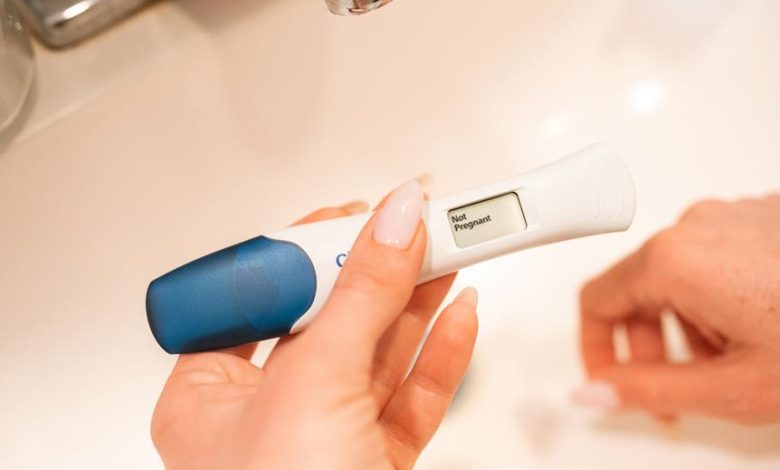Ways to Lower Your Blood Pressure

High blood pressure, a prevalent health condition, poses significant risks to overall well-being. This article offers expert guidance and proven strategies to effectively lower blood pressure levels. By making informed lifestyle changes, such as adopting a healthy diet, engaging in regular exercise, and managing stress, individuals can take control of their health and reduce the risk of serious complications. With a knowledgeable and authoritative approach, this article empowers readers to prioritize their cardiovascular health and improve their overall quality of life.
Understanding Blood Pressure and Its Impact
Blood pressure is a measure of the force of blood against the walls of the arteries and can have significant implications for overall health. Hypertension, or high blood pressure, is a common condition that affects millions of people worldwide. There are several causes of high blood pressure, including genetic factors, dietary choices, stress, obesity, and certain medications. Symptoms of hypertension may include chronic headaches, dizziness, fatigue, and difficulty in detecting warning signs. It is important to note that hypertension is often referred to as the "silent killer" because it can go unnoticed for years. To prevent and manage high blood pressure, lifestyle changes such as quitting smoking, reducing caffeine intake, adopting a low-sodium diet, and engaging in regular exercise are recommended. By understanding the causes and symptoms of hypertension, individuals can take proactive steps to maintain a healthy blood pressure and reduce the risk of associated health complications.
The Role of Diet and Nutrition in Lowering Blood Pressure
A key factor in lowering blood pressure is the role of diet and nutrition in promoting overall cardiovascular health. Dietary changes can have a significant impact on blood pressure levels. One important change is reducing sodium intake, as high sodium consumption has been linked to hypertension. It is also recommended to adopt a low-fat and low-sodium diet, which includes increasing the intake of fruits and vegetables. These foods are rich in essential nutrients, such as potassium and magnesium, which have been shown to help lower blood pressure. Additionally, nutritional supplements may be beneficial in lowering blood pressure. Some studies suggest that supplements like omega-3 fatty acids, garlic extract, and coenzyme Q10 may have a positive effect on blood pressure. However, it is important to consult a healthcare professional before starting any supplements to ensure they are safe and effective.
Effective Exercise and Physical Activity for Blood Pressure Control
Regularly engaging in physical activity is an essential component for effectively controlling blood pressure. Exercise has been shown to have a positive impact on blood pressure by improving cardiovascular health and reducing hypertension. When it comes to exercise intensity, moderate-intensity activities such as brisk walking, swimming, or cycling can be highly effective in lowering blood pressure. Aim for at least 30 minutes of moderate-intensity exercise on most days of the week. However, if you are unable to engage in moderate-intensity activities, alternative activities such as gardening, dancing, or even household chores can still provide benefits. The key is to find activities that you enjoy and can incorporate into your daily routine. Remember, regular physical activity is crucial for blood pressure control and overall cardiovascular health.
Stress Management Techniques to Reduce Hypertension
To effectively reduce hypertension, implementing stress management techniques can play a crucial role in improving overall blood pressure control. Stress has been shown to contribute to the development and worsening of hypertension. By adopting stress management techniques, individuals can help lower their blood pressure and reduce the risk of complications associated with high blood pressure. Two effective stress management techniques that have shown promise in reducing hypertension are yoga therapy and mindfulness techniques. Yoga therapy combines physical postures, breathing exercises, and meditation to promote relaxation and reduce stress. Mindfulness techniques, on the other hand, involve focusing on the present moment and cultivating a non-judgmental awareness of thoughts and feelings. Both yoga therapy and mindfulness techniques have been shown to lower blood pressure and improve overall well-being.
| Stress Management Techniques | Description |
|---|---|
| Yoga therapy | Combines physical postures, breathing exercises, and meditation to promote relaxation and reduce stress. |
| Mindfulness techniques | Involves focusing on the present moment and cultivating a non-judgmental awareness of thoughts and feelings. |
The Importance of Medication Compliance in Blood Pressure Management
Medication compliance is crucial in effectively managing blood pressure and reducing the risk of complications associated with hypertension. Regular check-ups are essential for blood pressure management as they allow healthcare professionals to monitor the effectiveness of the prescribed medications and make necessary adjustments. These check-ups also provide an opportunity for patients to discuss any concerns or side effects they may be experiencing. Additionally, social support plays a significant role in medication compliance. Having a supportive network of family, friends, or support groups can help individuals stay motivated and accountable in taking their medications as prescribed. It is important to recognize that medication compliance is a lifelong commitment and should not be taken lightly, as it significantly contributes to successful blood pressure management and overall cardiovascular health.
Lifestyle Modifications for Long-term Blood Pressure Maintenance
In order to maintain long-term blood pressure control, it is important to incorporate lifestyle modifications into your daily routine. These modifications include dietary restrictions and non-pharmacological interventions. Adopting a low-sodium and low-fat diet can significantly contribute to blood pressure maintenance. Limiting the intake of processed and restaurant meals, which tend to be high in sodium, can help reduce the risk of hypertension. Increasing the consumption of fruits and vegetables, which are rich in potassium and other nutrients, is also beneficial. Furthermore, regular exercise, ideally 30 to 60 minutes daily, can lower blood pressure by improving cardiovascular health and promoting weight loss. Other non-pharmacological interventions such as stress management techniques, such as meditation or yoga, can also aid in blood pressure control. By implementing these lifestyle modifications, individuals can effectively manage their blood pressure in the long term.
Monitoring and Tracking Your Blood Pressure Progress
Consistently monitoring and accurately tracking your blood pressure progress is crucial for effectively managing hypertension. To help you stay on top of your blood pressure readings, there are various tools available, including blood pressure apps and home blood pressure monitors. Here are some key ways to monitor and track your blood pressure progress:
- Utilize blood pressure apps: These apps allow you to record and track your blood pressure readings conveniently on your smartphone or tablet. They often provide features such as charts and graphs to visualize your progress over time.
- Invest in a home blood pressure monitor: With a home blood pressure monitor, you can regularly measure your blood pressure in the comfort of your own home. This can help you track your readings more frequently and detect any changes or trends.
- Follow a consistent monitoring schedule: Establish a routine for checking your blood pressure, whether it's daily, weekly, or as recommended by your healthcare provider. Consistency is key in accurately tracking your progress.
- Keep a blood pressure log: Maintain a record of your blood pressure readings in a logbook or on a spreadsheet. This allows you to easily track your progress and share the information with your healthcare provider during appointments.
- Share your results with your healthcare provider: Regularly communicate with your doctor or healthcare provider about your blood pressure readings. They can provide guidance, make adjustments to your treatment plan if needed, and help you interpret the data.

